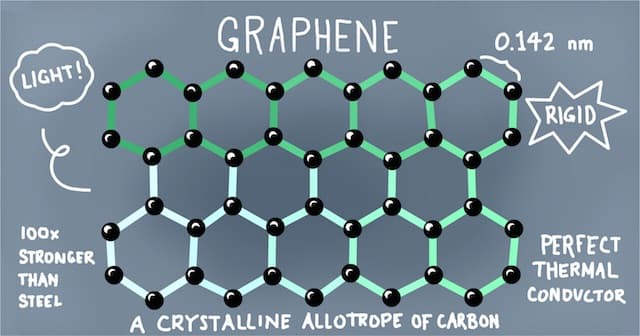Faster and more efficient method of graphene production developed
Graphene is the wonder material that continues to surprise researchers worldwide. At its core, it's just a one atom thick layer of carbon atoms that exhibits astonishing properties. For the sake of comparison, Graphene is about 200 times stronger than steel by weight, it's an excellent conductor of heat and electricity and transparent as well. In the recent times, we've seen multiple applications of graphene - from #-Link-Snipped-# to creating <a href="https://www.crazyengineers.com/threads/graphene-to-help-create-real-world-3d-holographic-images.80258">Graphene to help create real world 3D holographic images</a> and even <a href="https://www.crazyengineers.com/threads/worlds-smallest-fm-radio-uses-graphene.71729">World's smallest FM radio uses Graphene</a>.
Researchers from Ben-Gurion University, Israel and University of Western Australia have published a paper in ScienceDaily, describing a more efficient process of #-Link-Snipped-#. The summary of the paper notes that the new ultra-bright lamb-ablation method addresses the shortcomings in existing methods and can synthesize 4-5 layer graphene in higher yields. Researchers say that the new method is faster, scalable and takes care of limitations present in current processes.

Image Credit: #-Link-Snipped-#
Graphene was first discovered by Andre Geim and Konstantin Novoselov and the duo were awarded Nobel Prize in Physics (2010) for the same. The research paper mentions that the current process of graphene production involves toxic chemicals and lengthy processes. These aren't very scalable for commercial use.
The new method however, is just one step that promises higher yields. It does not use any toxic substances as it involves only Graphite (form of carbon) and concentrated light. The team now plans to experiment with scaling up of their process to produce multi-layer graphene.
Read all our earlier articles about Graphene here.
Researchers from Ben-Gurion University, Israel and University of Western Australia have published a paper in ScienceDaily, describing a more efficient process of #-Link-Snipped-#. The summary of the paper notes that the new ultra-bright lamb-ablation method addresses the shortcomings in existing methods and can synthesize 4-5 layer graphene in higher yields. Researchers say that the new method is faster, scalable and takes care of limitations present in current processes.

Image Credit: #-Link-Snipped-#
Graphene was first discovered by Andre Geim and Konstantin Novoselov and the duo were awarded Nobel Prize in Physics (2010) for the same. The research paper mentions that the current process of graphene production involves toxic chemicals and lengthy processes. These aren't very scalable for commercial use.
The new method however, is just one step that promises higher yields. It does not use any toxic substances as it involves only Graphite (form of carbon) and concentrated light. The team now plans to experiment with scaling up of their process to produce multi-layer graphene.
Read all our earlier articles about Graphene here.
0
